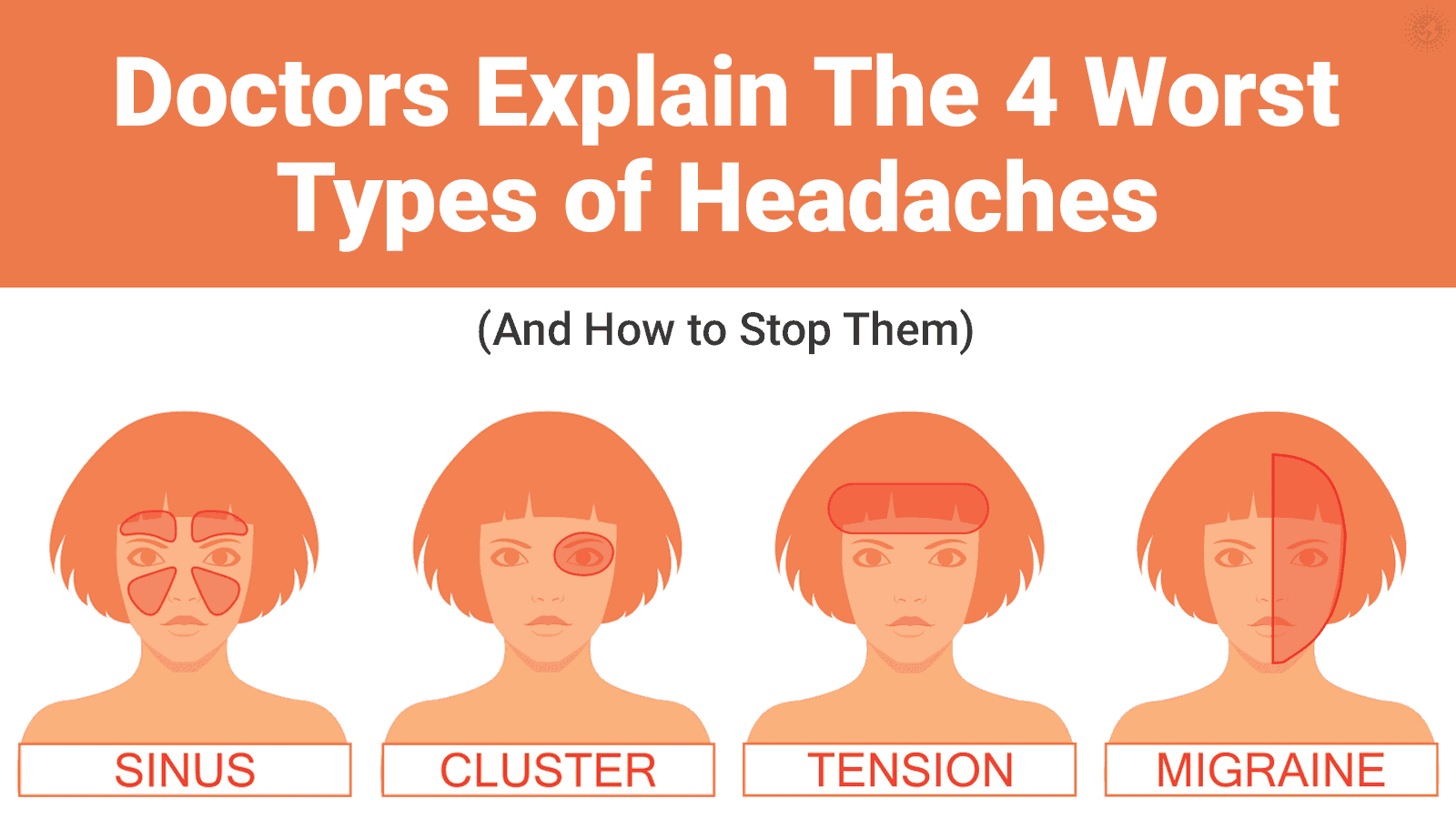Do you know what causes common headaches? If not, you’re not alone.
The answer is somewhat complicated: nerves of your head muscles and blood vessels switch on and transmit pain signals to your brain. As to why these signals activate in the first place is perplexing to even the most brilliant minds.
Most of us experience what is called tension-type headaches, which fall into one of two categories: chronic or episodic.
Episodic headaches are the most common and occur sporadically. About 90 percent of all headaches experienced are episodic. Episodic headaches last anywhere from 30 minutes to a few hours. Chronic headaches are more consistent, and occur most days, lasting for days at a time. Because of their frequency, chronic headaches usually require some pain management strategy.
And then some pains do not go away. This rare form of headache condition, which may last for years, is known as new daily persistent headache – and experts have no clue what causes it.
The most frequently experienced pain produces somewhat moderate discomfort, particularly compared to the conditions discussed in this article. Here, we will talk about the five most painful types of headaches, including their symptoms, causes, treatment, and prevention.
How Common Are Headaches?

According to the World Health Organization, WHO, headaches are widespread, with almost everyone experiencing them at some point. If they happen often, it’s a sign of a headache disorder. The most prevalent type is the tension-type headache, affecting over a third of men and half of women in developed countries, with similar rates in developing nations. Some people even experience daily affliction.
Migraine is another common headache, affecting 1 in 7 adults globally. It’s less frequent in the Far East and is more common in women due to hormonal factors. Migraines often begin around puberty and are most common between ages 35 and 45. However, they can also impact children.
Headaches can severely impact one’s quality of life, causing pain and distress. Moreover, for some it may affect work and social interactions. Yet, many overlook their significance, including some healthcare professionals. This leads to an underestimation of the emotional, social, and economic impacts of headaches.
The good news is that most headache issues don’t require costly treatments or specialists. Proper care mainly involves recognizing the problem, accurate diagnosis, lifestyle changes, and using effective medications. Most headache treatments are best managed in primary healthcare settings.
Here are the worst types of headaches:
1. Cluster headaches
Cluster headaches may be the most painful headache condition. Estimated to affect one in 1,000 people, cluster headaches target one side of the head and are excruciatingly painful. The pain feels burning and piercing, often located behind or around one eye.
Symptoms of clusters include drooping eyelid (on one side), reddening of the eye, swelling, sweating, flushing, and nasal congestion.
Scientists believe that cluster headaches tend to run in families. Triggers of cluster headaches may include alcohol or strong scents (e.g., perfume, household cleaning items, gasoline.)
Treatment for cluster headaches is multifaceted and includes painkillers, nasal spray, and the administration of pure oxygen.
2. Migraine
Similar to cluster headaches, migraines commonly target one side of the head. The pain produced by migraines is often moderate to severe and is often characterized as a throbbing and pulsating ache. Migraine headaches generally last between two and 72 hours.
Symptoms of migraine headaches include nausea, vomiting, blurred vision, lightheadedness, and sensitivity to light. A migraine episode may be preceded by an aura or warning symptoms such as blind spots, light flashes, or tingling on one side of the face, arms, or legs.
Treatment for migraines includes painkillers, anti-nausea medications, and gluticosteroids. Prevention is essential for migraine sufferers who know how to avoid common triggers.
3. Allergy or Sinus headaches
Allergy and sinus headaches occur when cavities within the skull, called sinuses, become inflamed. Allergic reactions may spawn the familiar allergy or sinus pain. Pain is most often located in the front of the head and sinus areas.
Symptoms of allergy or sinus headache include runny nose, fever, swelling of the face, and green and yellowish nasal discharge. Sinus infections are likely to produce sinus headaches as well.
It’s worth noting that migraines are often misdiagnosed as sinus pain. Upwards of 90 percent of diagnosed sinus headaches are, in reality, migraines.
Treatment of allergy and sinus headaches involves nasal steroid sprays, antihistamines, over-the-counter (OTC) decongestants, and antibiotics.
4. Hypertension headaches
Chronic hypertension, or high blood pressure, may produce a hypertension headache. Pain is often moderate to severe and is usually located on both sides of the head.
Symptoms of hypertension include chest pain, vision changes, numbness or tingling of the hands or feet, and trouble breathing. Hypertension headaches arise from dangerously high blood pressure, which is a medical emergency. So please seek immediate medical attention.
Treatment of hypertension varies but generally involves something to monitor blood pressure. Your doctor might prescribe beta-blockers, medications that lower your blood pressure, to fix it. OTC pain medications may help to ease short-term pain.
Final Thoughts: Prevention Is the Best Strategy
Most of us will only ever experience the common, tension-type described earlier. As it turns out, professional advice on preventing tension and migraine-type headaches is (surprisingly) very similar!
For acute and chronic headaches, mild and severe, the most critical advice is to avoid headache triggers, the most common being long-term stress, alcohol, excess caffeine intake, skipping meals, poor sleeping habits, and medication overuse.
Additionally, getting adequate sleep and exercising regularly is very beneficial.


















